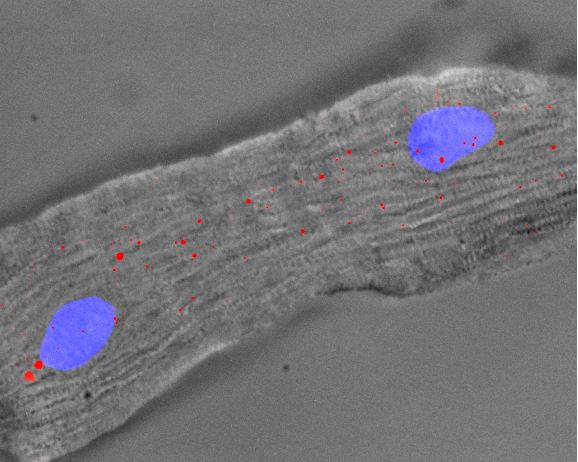
New research has discovered a potential means to trigger damaged heart cells to self-heal. For the first time, researchers have identified a long non-coding ribonucleic acid (ncRNA) that regulates genes controlling the ability of heart cells to undergo repair or regeneration. This novel RNA, which researchers have named “Singheart”, may be targeted for treating heart failure in the future.
The discovery was made jointly by A*STAR’s Genome Institute of Singapore (GIS) and the National University Health System (NUHS, both Singapore). The research has been published in Nature Communications.
In this project, the researchers used single-cell technology to explore gene expression patterns in healthy and diseased hearts. The team discovered that a unique subpopulation of heart cells in diseased hearts activate gene programmes related to heart cell division. This uncovered the gene expression heterogeneity of diseased heart cells for the first time. In addition, they also found the “brakes” that prevent heart cells from dividing and, thus, self-healing. Targeting these “brakes” could help trigger the repair and regeneration of heart cells.
“There has always been a suspicion that the heart holds the key to its own healing, regenerative and repair capability. But that ability seems to become blocked as soon as the heart is past its developmental stage. Our findings point to this potential block that when lifted, may allow the heart to heal itself,” explains Roger Foo, the study’s lead author, who is principal investigator at both GIS and NUHS’ Cardiovascular Research Institute (CVRI), and senior consultant at the National University Heart Centre, Singapore (NUHCS).
“In contrast to a skin wound where the scab falls off and new skin grows over, the heart lacks such a capability to self-heal, and suffers a permanent scar instead. If the heart can be motivated to heal like the skin, consequences of a heart attack would be banished forever,” adds Foo.
The study was driven by first author and former senior research fellow at the GIS, Kelvin See, who is currently a postdoctoral researcher and Mack Technology Fellow at University of Pennsylvania, Philadelphia, USA.
“This new research is a significant step towards unlocking the heart’s full regenerative potential, and may eventually translate to more effective treatment for heart diseases. Heart disease is the top disease burden in Singapore and strong funding remains urgently needed to enable similar ground-breaking discoveries,” says Mark Richards, Director of CVRI.
Executive Director of GIS, Prof Ng Huck Hui added, “This cross-institutional research effort serves as a strong foundation for future heart studies. More importantly, uncovering barriers that stand in the way of heart cells’ self-healing process brings us another step closer to finding a cure for one of the world’s biggest killers.”









